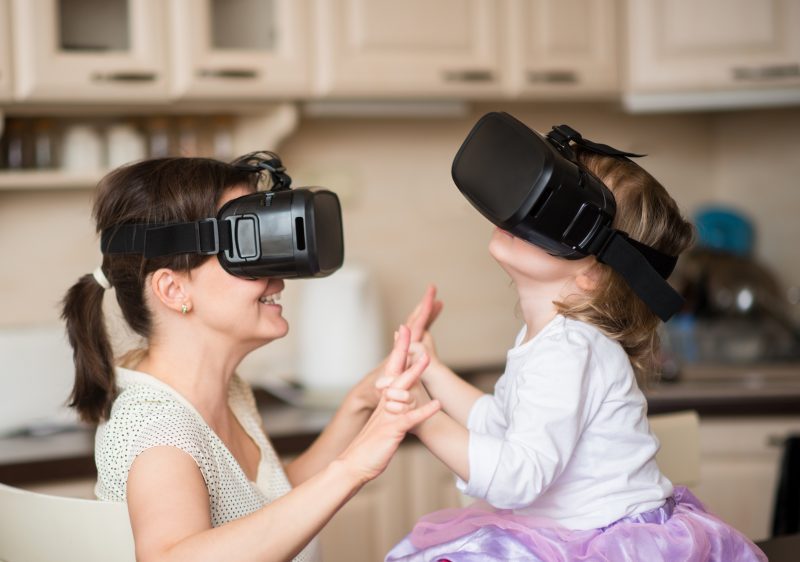Worried about toy safety during the holidays? Mass. Eye and Ear specialists offer some tips to avoid eye and ENT injuries.
‘Tis the season to be jolly and generous. But when it comes to kids, be sure to protect those little eyes and ears from hazardous toys.
According to a recent report issued by the Consumer Product Safety Commission, approximately 174,100 children were treated in emergency rooms last year for toy-related injuries, and seven children died from these injuries. Most children’s injuries were to the head and face area.
To help you keep your kids safe this holiday season, we spoke with pediatric ophthalmologist (eye care) Dr. Melanie Kazlas and pediatric ENT (ear, nose and throat care) Dr. Michael Cohen, who offered their thoughts on some of the most common toys that may be harmful to kids’ eye and ENT health.
1) Toy guns, or anything with projectiles

Toys that shoot objects (Nerf toys, foam blasters, darts, etc.) can cause severe trauma to the eyes if not handled correctly. Dr. Kazlas warns that these toys should never be pointed at someone’s face directly. The impact from the toy’s ammunition could cause trauma to the eye, including hyphema, or pooling of blood in the eye. Kids may notice blurred vision and eye pain right away, or there could be a delay of symptoms. “Awareness of proper use of Nerf guns and similar air-powered projectiles is really important,” Dr. Kazlas said. “If there’s any sudden eye pain or redness, parents should bring their child to the emergency room right away.”
2) Anything powered by button batteries

Tiny, disc batteries — silver button batteries — power a number of small toys. Dr. Cohen warns that these batteries are extremely dangerous if they are swallowed or placed in the nose or ear, as they leak a toxic material that can severely burn tissues inside the body. “If this happens, it is a true emergency,” he said. “It needs to be treated in the emergency room right away.”
The most common age for children to put things in their mouth, nose or ears is about 18-months to 3-years. Kids under 3 should not be playing with button battery toys at all, or without direct supervision.
There are lots of toys that contain button batteries, and toys that may be intended for 8-year-olds could find their way into the hands of 2-year-olds, who are more likely to put something in their mouths. Be sure that these toys are very secure, and that button batteries won’t fall out if the toy is smashed.
3) Virtual reality games

Virtual reality games are incredibly popular, and while most kids tolerate them well, some may experience motion sickness and headaches after too much time in a 3D world.
Motion sickness is a disagreement between what our eyes see in front of us and the information that the brain is getting from the inner ear (the central part of the balance system). For the same reason that some kids get nauseous in a moving car, virtual reality creates a sense of movement that doesn’t quite match up with what the child sees in front of them. So, when they move their heads, the field of view may move as well, but those movements aren’t necessarily proportionate to what they’d actually see if they were looking at the real world.
Dr. Cohen says that some kids just won’t be able to play virtual reality games — it makes them too nauseous. But for others, limiting play to relatively short periods of time and taking frequent breaks to rest the eyes will help. “Doing things to get the equilibrium back, such as a short walk outside, will help children to tolerate virtual reality well.”
4) Play makeup

Makeup kits for playing dress up can be a lot of fun, but make sure that children are not getting makeup directly in their eyes. When makeup gets into the eye, it may cause a physical irritation to the eye, and kids may say that they feel a foreign body sensation. If this happens, Dr. Kazlas recommends gently washing the eye — splash some cool water on the eye, or use an over-the-counter eye wash to gently irrigate the eye. If the eye is still red or teary, and perhaps light sensitive, seek medical care from an eye doctor.
5) Loud devices

While most of us think of hearing loss as a condition affecting older people, loud noise can affect our hearing at literally any age.
Cohen recommends setting volume limits on any devices that could threaten your child’s hearing. Most cell phones, tablets, computers, gaming systems and televisions have settings that will restrict that device from going above a certain volume level. To ensure your devices are set at a safe noise level, Dr. Cohen recommends setting the volume to no higher than 70 percent of the maximum volume.
Bonus: Electric cords

While not necessarily a toy, with Christmas lights everywhere, electrical cords to chew on or play with can attract little ones. Make sure you’re not plugging too many things into one outlet, and make sure that the cords are secure and not in a place where young kids can chew on them. Dr. Cohen warns that, while mouth burns from electrical cables are rare, even around the holidays, they can be difficult to treat when they happen.
From all of us at Mass. Eye and Ear, we wish you a fun and safe holiday season! If you or your children need our help during the holidays, Mass. Eye and Ear’s Emergency Department is open 24/7 for eye and ENT care. Call us at 617-573-3431.




While many may object to the use of fidget spinners, they are not powered by button batteries; in fact, they are not “powered” at all beyond the manual flick of a finger. That is to say, while button batteries are dangerous for the reasons cited in the article, the image used to illustrate the point is not correct.
Scott, Thank you for reading, and thank you for this feedback. According to the CPSC, some fidget spinners do contain button batteries. All the same, we’ve updated the post to avoid any confusion.